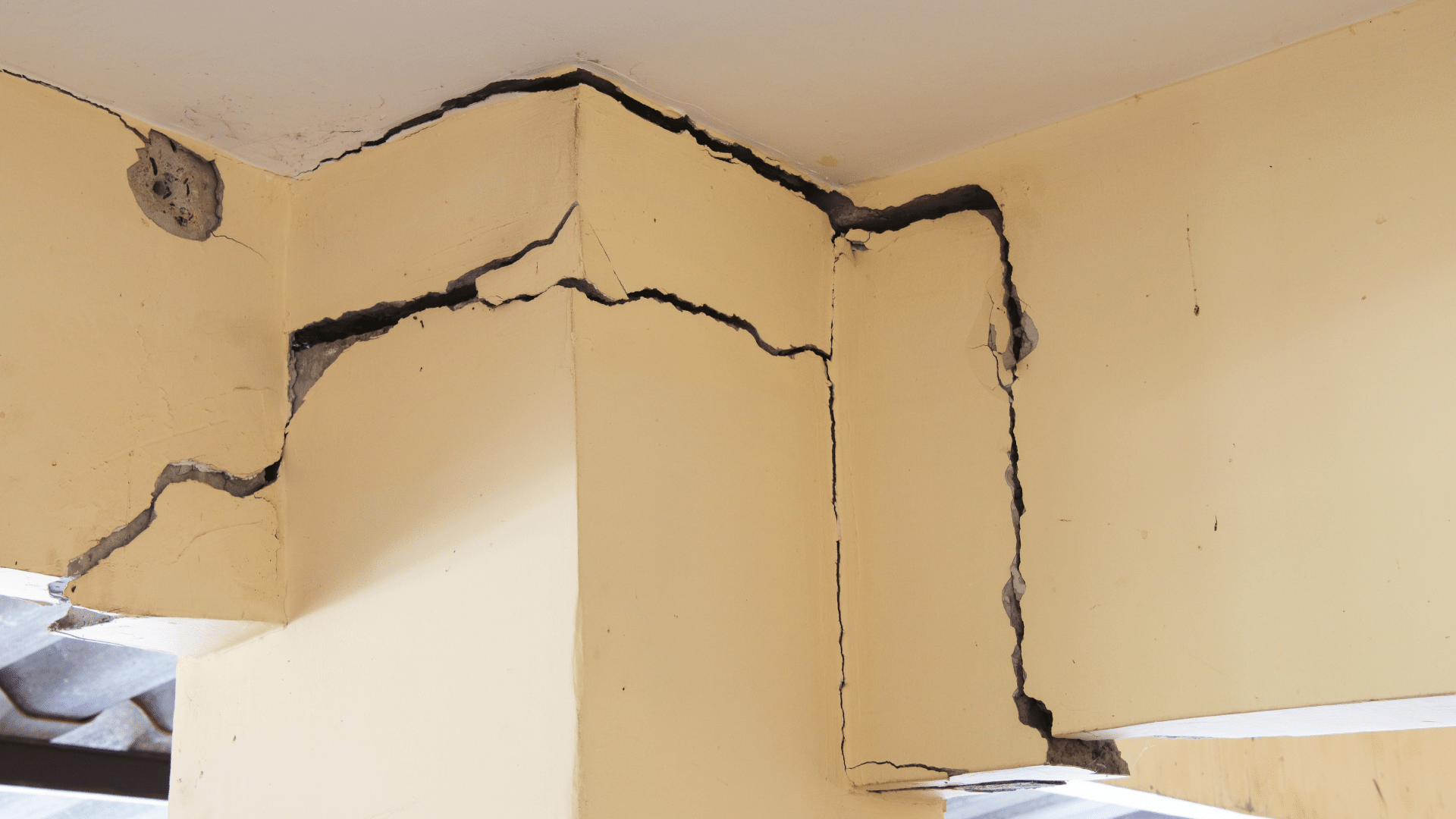
25 Jul What Are Structural Cracks and How Do I Fix Them?
Structural cracks are a common concern for homeowners, as they can potentially jeopardize a house’s stability and safety. As a homeowner, it is crucial to have a solid understanding of structural cracks, the factors contributing to their formation, and the necessary steps to fix them.
This article will help you explore what causes them, the implications for Pittsburgh homes, practical guidance on identifying these cracks, distinguishing them from cosmetic cracks, and offering practical solutions to address the issue at hand.
Understanding Structural Cracks
What are structural cracks?
Structural cracks are breaks in the foundation, walls, or structural elements of a building. These cracks can vary in size and shape. Unlike cosmetic cracks (also called non-structural cracks), they are typically wider and can extend through multiple layers of the building material. These cracks indicate underlying issues that can compromise the structural integrity of the building if left unaddressed.
What causes them?
The causes of structural cracks are diverse. Some factors include inadequate design or construction practices, unfavorable soil conditions, temperature fluctuations, and external forces like earthquakes or excessive loads.
These elements collectively contribute to the development of stresses and movements within the building, eventually forming cracks.
 Why are Pittsburgh homes prone to them?
Why are Pittsburgh homes prone to them?
Pittsburgh homes are susceptible to structural cracks due to the region’s unique geological characteristics, including expansive clay soils and complex geology on the Appalachian Plateau. These soil conditions can cause soil movement and settlement, placing additional stress on home foundations.
Furthermore, Pittsburgh’s temperature variations, especially the freeze-thaw cycle during cold winters, can further contribute to the formation and widening of structural cracks over time. Lastly, the older age of many homes in Pittsburgh increases their vulnerability to cracks as materials deteriorate, foundations shift, and structural components weaken.
How do structural cracks play into the stability of a home?
Cracks in a home can significantly affect its stability and overall structural integrity. Whether they appear in the foundation, walls, or other structural components, they weaken the entire structure by letting moisture seep in, making it more susceptible to damage and deterioration.
In addition, cracks create an opportunity for water infiltration, which can cause further damage to the foundation. If left unaddressed, they can widen over time and compromise the load-bearing capacity of the building.
 Identifying Structural Cracks
Identifying Structural Cracks
What do they look like?
Structural cracks usually resemble vertical, horizontal, or diagonal fissures in the foundation, walls, or other load-bearing parts. They tend to be wider than minor or cosmetic cracks, and their size depends on their severity. However, keep in mind that the way cracks look can vary due to factors such as the construction materials used, the age of the home, and the reasons behind their formation.
How do they differ from cosmetic cracks?
Characteristics that differentiate structural from cosmetic cracks include:
- Width: Typically wider, often exceeding 2 mm in width.
- Orientation: Generally appears as vertical, horizontal, or diagonal openings in the foundation, walls, or other load-bearing components of the structure. The direction can provide insight into the forces or movements contributing to its formation.
- Irregular Patterns: Instead of following a regular pattern, structural cracks may branch out, intersect, or exhibit jagged edges, deviating from a uniform shape.
- Depth and Length: Structural cracks can have varying depths and lengths depending on the extent of the damage. Extension through multiple layers of building material indicates a more significant issue within the structure.
- Signs of Movement: Ongoing movement or displacement can be observed through the widening of the crack over time or visible misalignment of doors, windows, or other structural elements.
Where would you find them?
The foundation is a common site for cracks, which can appear on exterior and interior walls and within the concrete slab or footing. Other common areas of occurrence include the walls, floors, ceilings, and even the roof of a structure.
Preventative Measures
Regular maintenance
Perform routine checks for cracks to tackle minor issues promptly that will prevent them from becoming major problems.
Foundation inspections
Schedule regular inspections by professionals to detect early signs of foundation problems, including cracks or settling. Taking prompt action based on their recommendations helps maintain stability and safety.
Controlling moisture
Manage moisture effectively to prevent structural damage. Ensure proper drainage around your home, maintain gutters and downspouts, promptly fix plumbing leaks, and utilize dehumidifiers or ventilation systems to control indoor humidity levels.

What to do when you think you have structural cracks?
Do not hesitate to ask an Aquaguard expert if you are still unsure about the cracks you found in your home! Our team will assess the cracks, offer expert advice, and recommend the most suitable and effective solutions for your situation.
Understanding structural cracks is crucial to ensure the stability and safety of your home. Cracks, which develop in the foundation, walls, or other load-bearing components, can significantly affect the structure’s overall integrity.
Preventative measures like regular maintenance, professional foundation inspections, and moisture control are essential to avoid structural issues. Reach out to us today!



Sorry, the comment form is closed at this time.